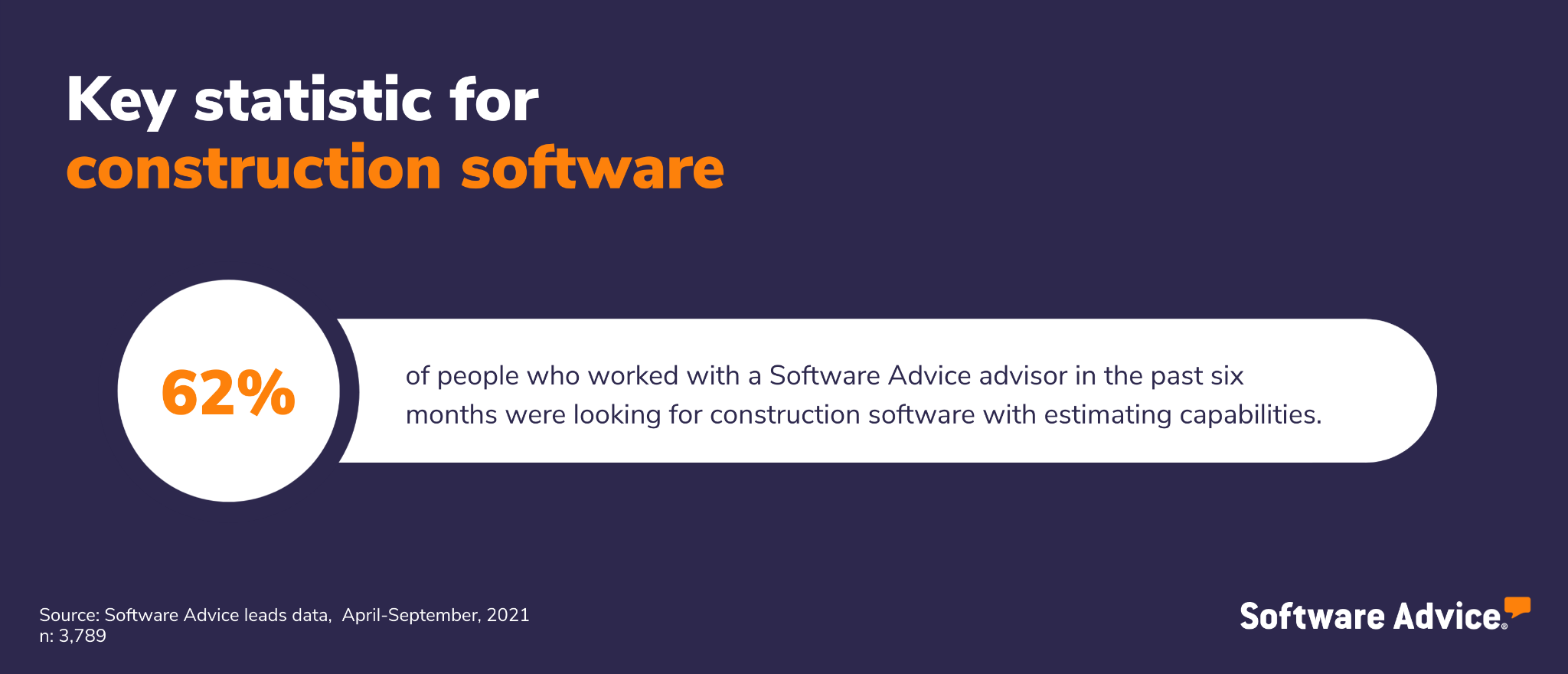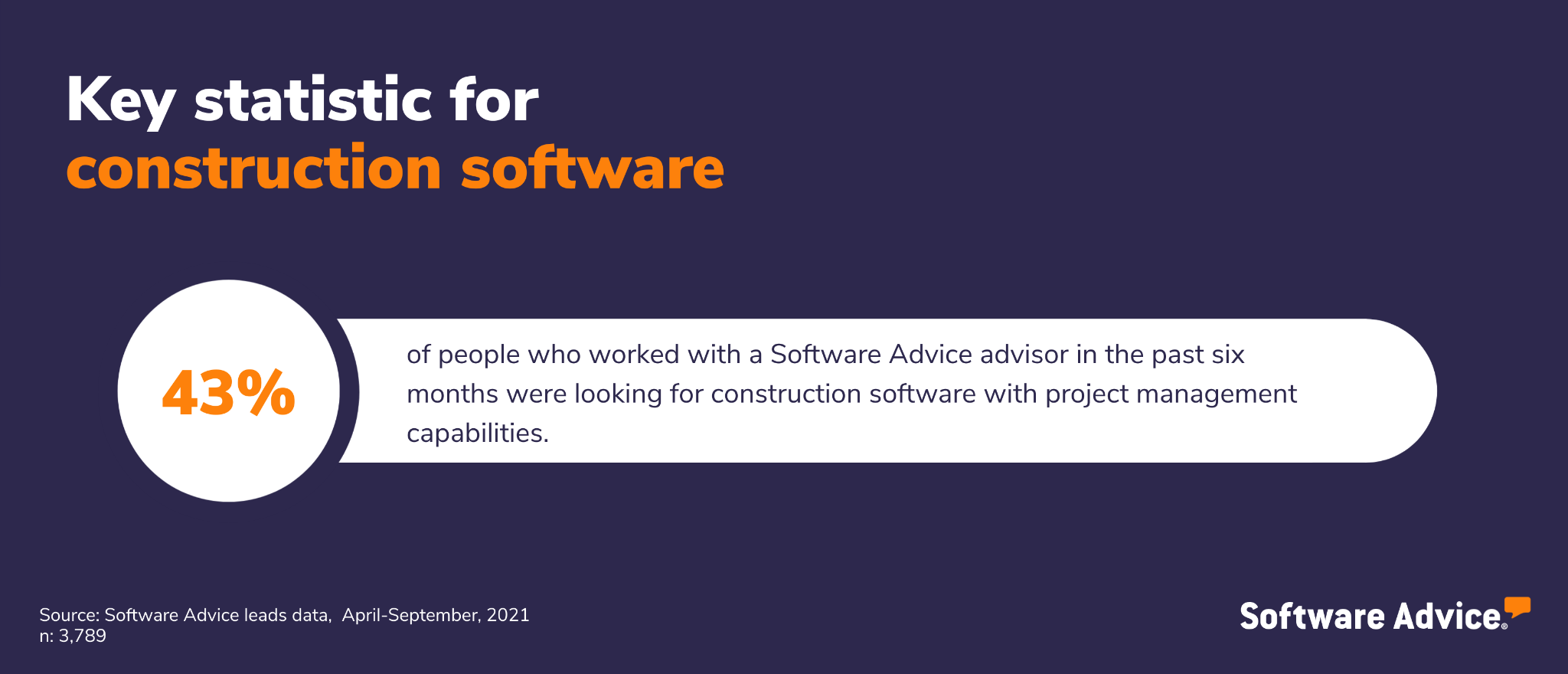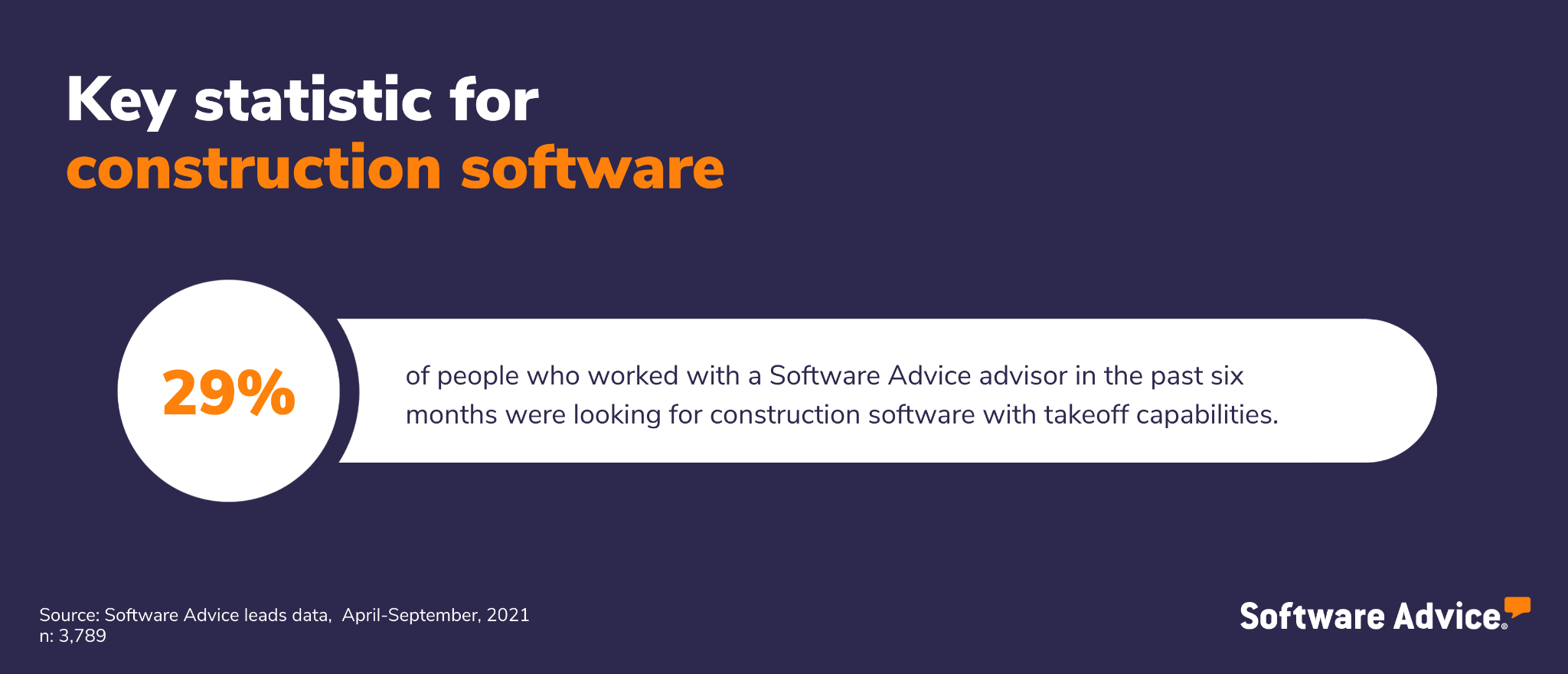Top Challenges Construction Professionals Are Facing
Construction is one of the most powerful industries on the planet. You start with a (virtual) stack of blueprints and a team of workers, and you end up with a physical structure that could stand for hundreds of years.
But the path from conception to project completion is riddled with obstacles, from unpredictable costs and supply chain hangups, to juggling schedules across multiple teams and locations.
In this article, we’ll look at three top construction challenges for construction professionals–estimating, scheduling, and planning–based on the construction software features that are most in demand with buyers, along with strategies for dealing with each.
Top construction challenge: Estimating

During the past six months, more than 60% of the construction software buyers that worked with one of our Software Advice advisors were looking for software that could help them with estimating.
Why is estimating so important?
Because accurate estimates help companies stay on budget with their construction projects, and when companies are able to stay on budget they are happy and ready to work on more projects with the construction firm that gave them an accurate estimate.
Estimating software gathers all of the construction costs (labor, materials, rentals, etc) and automates the calculations to save time, reduce human error, and ultimately provide more accurate construction estimates.
So how effective is estimating software? According to our 2021 Small Business Construction Survey of more than 500 construction professionals (methodology below), 42% said that more accurate estimates was a top positive impact of their construction software, putting that ahead of all other positive impacts.
Ready to explore solutions? Check out our directory of more than 130 construction estimating tools here.
Top construction challenge: Scheduling and project management

A construction project without organized scheduling and sound project management is chaos, and chaos is the last thing you want in a construction project. So it’s no surprise that 43% of the construction software buyers who worked with our advisors in the past six months were looking for software to help them with their project management needs.
Construction project management software is the foundation of any firm’s software stack. It can help construction teams stay on schedule and within scope, communicate across sites, keep track of budget, and more.
Having access to effective, up-to-date construction project management software to help with scheduling is so important to construction firm leadership that more than half of small construction businesses implemented new construction project management software in the past year alone (methodology below). That’s more than any other type of software, including online meeting software (32%) and collaboration software (26%).
Ready to explore solutions? Check out our directory of more than 80 construction scheduling systems here.
Top construction challenge: Planning and takeoff

In construction, everyone is eager to break out the big hardware, get their hands dirty, and start building something. But without proper planning, that building could end up as a big mess.
Perhaps that’s why almost 30% of construction professionals looking for new software with us in the past six months were looking for help with takeoff.
Takeoff software helps construction firms gather together electronic versions of all their blueprints and designs for a given project. The software then helps those teams set a realistic scope and create a comprehensive list of all the construction materials and skilled labor they’ll need to complete the project.
Takeoff software works hand-in-hand with estimating software, and they’re often included in the same system.
Ready to explore solutions? Check out our directory of almost 50 construction takeoff tools here.
Download the full state of construction tech adoption report
Now that you have an idea of what the top construction challenges are, take the next step with our construction tech adoption report. With insights from construction leaders and construction software buyers, along with actionable recommendations, it’s important to know what these numbers could mean for your business.
Click here to download the complete report
Methodology
Gartner’s 2021 Top Technology Trends Survey
This study was conducted to better understand the technology usage, needs, challenges, and trends for small businesses. The research was conducted between August and October 2021 among 548 U.S. respondents from the education, financial services, healthcare, IT, manufacturing, media, natural resources, retail, and telecommunications industries.
In this report, we only highlighted responses from 52 respondents in the construction industry.
Respondents were screened for the job categories of President, CEO, Owner or Sole Proprietor, General Manager, C-Level Executive, Business Unit Manager, Vice President, Director, Functional Lead (Manager & Above), and Office Manager, and had to have some level of influence on software and technology decisions. Additionally, participants’ companies had to have been in business for 12 months or longer, have between 2 and 500 employees, and earn between $5 to $250 million in revenue.
Disclaimer: Results of this study do not represent global findings or the market as a whole but reflect sentiment of the respondents and companies surveyed.
Small Business Construction Survey
Software Advice conducted the Small Business Construction Survey in April 2021 of 538 U.S.-based workers in the construction/contracting industry in small business. Respondents were screened for employment status (employed full time), annual business revenue (<$100mil), and number of employees at respondent’s company (1-250).
Software buyers analysis methodology
Our software advisor team regularly chats with people like you who reach out to us for help finding construction software. The data used to create this report was collected by our advisors during those conversations to provide software guidance, rather than for market research. We analyzed 3,789 interactions from U.S. software buyers between April to September 2021 for the purposes of this report.
These findings exclusively represent those people who contacted Software Advice for guidance on software selection and may not be indicative of the market as a whole. Our commentary solely represents the views of the author. Data points are rounded to the nearest whole number.